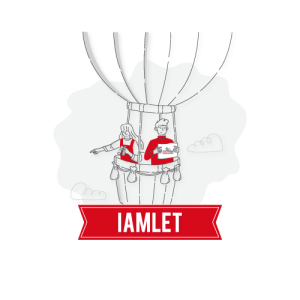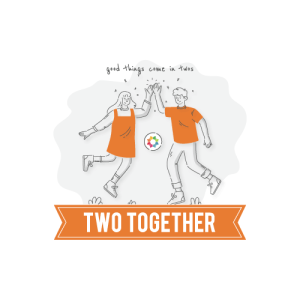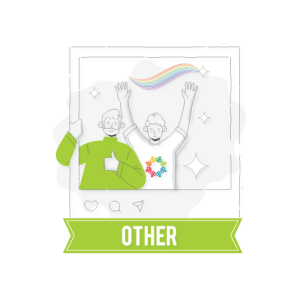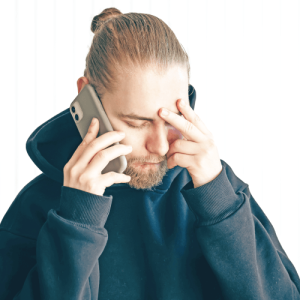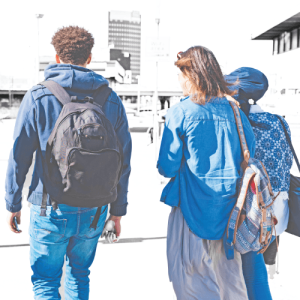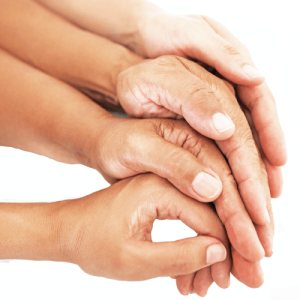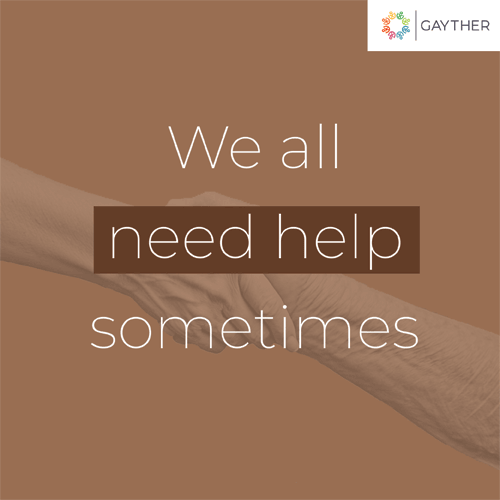
2025 LGBTQIA+ Pioneers

Over the centuries, many brave and exceptional individuals, often at significant personal risk, went against the odds and refused to let inequalities and prejudices stop them from changing the rules, laws and opinions relating to the LGBTQIA+ community across the globe.
We all must remember and celebrate all those exceptional individuals. Those people that are now and in the past who have fought hard for equal treatment for the LGBTQIA+ community
Each year we create LGBTQIA+ dollars and feature important and key individuals related to the LGBTQIA+ community. Though some of the individuals featured may not have publicly identified as LGBTQIA+, they are exceptional people who have advanced the community or world in some way.
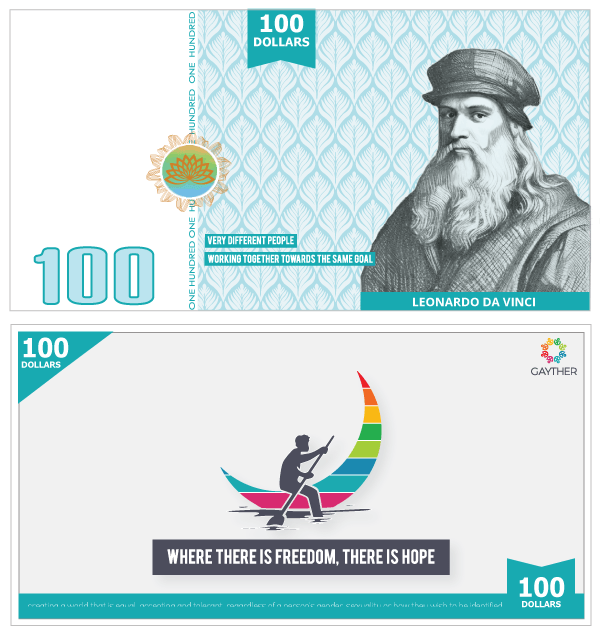
Vinci, Republic of Florence, Italy
b. 1452 – d. 1519
Leonardo da Vinci was a truly exceptional individual, a talented artist, considered one of the greatest painters in the history of Western art. He created some of the most iconic works in the world, from the Mona Lisa to his famous depiction of the Last Supper. In addition to being an artist, Leonardo was a talented engineer, scientist, theorist, sculptor, and architect.
Even though Leonardo was a respected artist during his lifetime, it was long after his death that his engineering, scientific, and theorist skills were better appreciated, which is also why he is one of the world’s most significant and recognisable individuals today.
Leonardo’s designs included an early model of the parachute, a diving suit, the concept of an armoured vehicle, a self-propelled cart, and a catapult, as well as his scientific theories, such as the theory of colours and anatomical drawings, including the first accurate depiction of the human spine.
Though Leonardo’s sexuality is not widely publicised, it is believed that he may have been gay or bisexual, given there are documented accounts of Leonardo having same-sex encounters and relationships throughout his life. His correspondence and court accounts all form the basis of the belief that Leonardo would have been considered LGBTQIA+ today.
Leonardo di ser Piero da Vinci was born in the city of Vinci, Tuscany, in Italy, close to the region capital, Florence. Leonardo was the illegitimate child of Piero da Vinci, a successful legal notary and Caterina di Meo Lippi. When Leonardo’ was just one year old, his parents married different people, with each parent collectively contributing to the births of 16 half-siblings.
Though little is known about Leonardo’s early years, what is known is that he only received a basic informal education, which provided him with writing, reading, and mathematics skills. Leonardo’s lack of formal education is surprising, given that his father held an important position within the city; however, many historians believe that Leonardo may have shown an aptitude for art from a young age, citing why his family may have helped him pursue art.
At age 14, Leonardo became a studio boy for the Florentine painter and sculptor Andrea del Verrocchio, who, in turn, was mentored by the great Italian sculptor Donatello. At age 17, Leonardo became a full apprentice alongside notable artists, including Perugino and Botticelli, during which he honed his technical skills in art and sculpting.
At age 20, Leonardo qualified as a master of the Guild of Saint Luke, the guild of artists and doctors of medicine, where, with the help of his father, he set up his first studio. In 1478, at age 26, Leonardo received a commission to paint the altarpiece for the Chapel of Saint Bernard in the Palazzo Vecchio, a surprising development as just two years prior, he was involved in a scandal in which Leonardo was accused along with two of his friends of the crime of sodomy relating to an incident with a male prostitute. The crime, at that time, carried a death sentence; however, all charges were dropped due to a lack of evidence.
Leonard received commissions from the church, aristocracy, and the noble people across Italy. Through his association with the powerful Florentine Medici family, Leonardo was sent to act as an ambassador to Ludovico il Moro, the Duke of Milan, who ruled the city during that period. While in the city, Leonardo created many masterpieces, including The Last Supper for the Santa Maria delle Grazie monastery.
After France took control of the city, Leonardo fled to Venice, where he was employed as an architect and engineer to help defend the city from attack. Two years later, he returned to Florence; Leonardo rejoined the Guild of Saint Luke, where he started work on one of his greatest masterpieces, the Mona Lisa.
Leonardo’s position changed in 1513 when Giovanni Medici became head of the Catholic church by assuming the papacy and becoming Leo X. Given Leonardo’s long, close association with the Medici family, he went to Rome, and the new pope gave Leonardo a position and a commission in the city.
In 1516, King Francis I of France, a year after recapturing the city of Milan, requested that Leonardo relocate to France, where the King gave him a position and pension. Leonardo’s health began to deteriorate while in France; first, he suffered paralysis in his right hand, and ultimately, he became ill and bedridden for months.
Three years later, in Clos Lucé, in 1519, at the age of 67, Leonardo died, believed to have been a stroke, and his remains were interred in the Collegiate Church of Saint Florentin at the Château d’Amboise in France.
Leonardo was a remarkable individual and remains one of the most influential polymaths in the world. Leonardo was never married, and except for the court case, Leonardo never directly or indirectly confirmed his sexuality. His apprentices, Salaì and Melzi, who inherited much of his estate upon his death and in their letters, described their relationship with the polymath as loving and passionate. Though his sexuality has been under scrutiny for centuries, his discretion is understandable given the church and country’s position and risk relating to same-sex relationships at that time.
Leonardo’s famous notebooks are a fantastic collection of drawings, thoughts, and concepts that the polymath developed throughout his life. Though very little is known of Leonardo’s childhood, one apparent thing is how gifted he was, even from a young age. Leonardo honed his craft and became one of history’s most important artists and inventors. Even living during the end of the middle or medieval period, Leonardo was a major contributor to the great Renaissance period in Italy. Leonardo was an exceptional individual, and may you never be forgotten.
TAKING PRIDE IN YOU
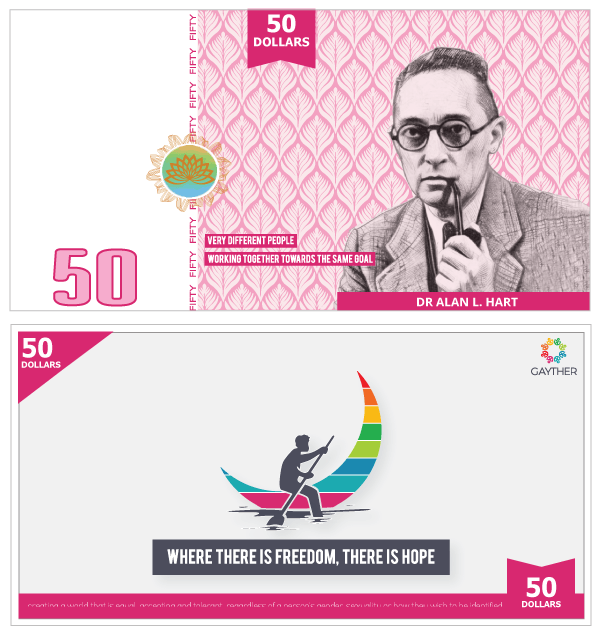
Halls Summit, Kansas, United States
b. 1890 – d. 1962
Alan dedicated his career to researching and treating Tuberculosis, often abbreviated as TB, which, at the time, was one of the biggest causes of death in the United States. The disease generally affects the lungs, and Dr. Alan Hart, a talented physician, was among some of the first physicians to document how the disease spread. Initially, it was believed that the disease was hereditary; however, scientists discovered that it was caused by an airborne bacteria that, by being close to someone with the illness, spread by coughing and sneezing.
Though there was no cure for the advanced stage of the disease, the only hope was early detection. X-ray, which was discovered in 1895, was gaining popularity for the detection of bone fractures and tumours; however, it was Alan who first identified how the technology could be helpful in the detection of TB, which it ultimately did and became an effective way of detecting the disease in its early stages, saving lives.
Alberta Lucille was born in Halls Summit, an unincorporated community in Coffey County in Kansas in the United States of America. Later known as Alan, was born to Albert L Hart, who sadly died when Alan was two years old, and Edna Hart, who, after the death of her husband, reverted to her maiden name, Bamford and moved the family to Oregon. Alan identified as a male, and during his early childhood, while living at his grandfather’s farm, he had the freedom to present himself as a male and play with the masculine toys made by his grandfather.
From a young age, Alan’s parents and grandparents generally accepted and supported his gender expression, which was exceptional considering the period. Acceptance was evident when, in the obituaries of his grandparents, they listed Alan as their grandson.
While at high school, Alan frequently submitted essays under his chosen name, Robert Allen Bamford Jr, which he was permitted to do so by the school. He also had articles published in the local newspaper using the same pseudonym. After graduating high school, Alan attended Albany College after attending Stanford University for one year to be with his then-partner, Eva Cushman. In 1917, Alan graduated from the University of Oregon Medical Department as a doctor of medicine.
From a young age, Alan decided to transition from female to male. Upon reaching adulthood, Alan began undergoing psychiatric counselling and surgery to live as a man. It was in 1917, at age 27, that Alan approached Joshua Allen Gilbert, PhD, M.D. at the University of Oregon, to request his help in performing surgery to eliminate menstruation and remove the risk and possibility of becoming pregnant.
After much deliberation and assessment, Dr Gilbert performed the surgery during the winter break of 1917, and Alan legally changed his name. The surgery was important as it was the first documented transgender reassignment surgery in the United States.
After graduation, Alan began to intern at the San Francisco Hospital after transitioning to a male; however, a former classmate outed Alan as transgender, which further frustrated him and that his medical degree had been issued in his name at birth. The situation caused Alan to leave the hospital, resulting in him setting up a practice in Huntley, Montana.
After the effects of the depression affected the local community, Alan closed the practice and secured a position as a physician at Albuquerque Sanatorium and later at the Trudeau School of Tuberculosis in New York, which started his career, interest and association with the deadly disease, TB.
While working with disease, Alan decided to obtain a master’s degree in Radiology from the University of Pennsylvania. Over the years, he held a number of positions, including becoming the medical adviser to the Army Recruiting and Induction headquarters in Seattle. Alan became appointed Director of Hospitalization and Rehabilitation for the Connecticut State Tuberculosis Commission in West Harford, Connecticut, where Alan and his wife, Edna Ruddick, would live for the remainder of their lives.
After the Second World War, synthetic testosterone became available in the United States, allowing Alan to grow facial hair, develop a deeper voice and become more confident in his appearance. Alan dedicated his life to his medical practice, research, and as a novelist. In 1962, Alan, at age 71, sadly died of a heart attack. Alan left explicit instructions that he was to be cremated and his ashes to be scattered over Puget Sound, a marine waterway found in the US state of Washington.
Alan was an exceptional individual, intelligent, inquisitive, brave and confident. Alan knew from a young age that he was different, and even though his life was challenging, he decided from a young age to accept who he was and live as his true self. Alan was a talented physician who dedicated his life to his field and medicine. He was a major contributor to helping reduce the number of deaths caused by the deadly disease tuberculosis. Thank you, Alan, for helping to save so many lives; may you never be forgotten.
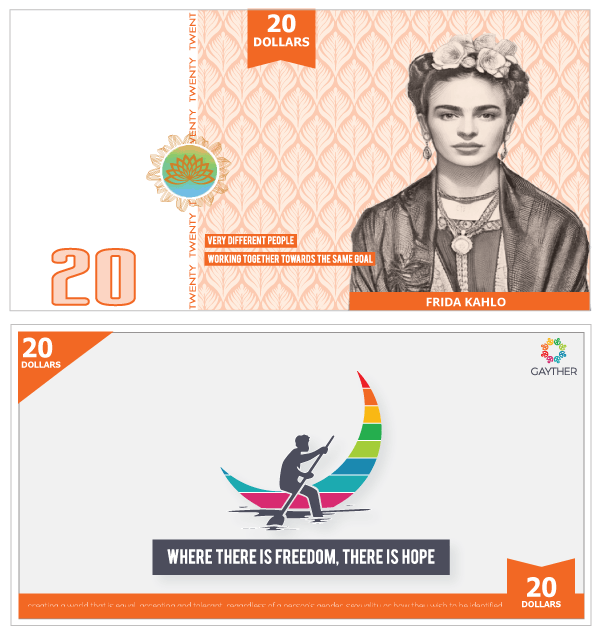
Coyoacán, Mexico City, Mexico
b. 1907 – d. 1954
Even today, Frida remains one of the world’s most known and recognisable Mexican artists. From her distinct and unique style, which draws inspiration from her Mexican heritage to her thick iconic eyebrows and hairstyles, images of this famous artist are instantly recognisable. Frida was a very talented artist, and one of her paintings, The Frame, which is still displayed in the Louvre in Paris, made her the first Mexican artist to be displayed within this famous French art collection.
Frida’s artwork had a distinctive style that combined elements of folk art with surrealism and symbolism. Her work often included vivid colours, personal themes, and a focus on identity, pain, and the female experience. Kahlo is perhaps best known for her self-portraits, in which she explored her own physical and emotional suffering, particularly following a severe bus accident in her youth that left her with lifelong health issues.
Beyond her art, she is celebrated as a feminist icon and cultural figure for her outspoken views on gender, race, and class and her unapologetic embrace of her Mexican heritage. Kahlo’s legacy continues to inspire and resonate with many around the world.
Magdalena Carmen Frida Kahlo y Calderón was born in 1907 in Coyoacán, a small village on the outskirts of the country’s capital, Mexico City. Her father, Guillermo Kahlo, was a photographer originally from Germany, and her mother, Matilde Calderón y González, was of Indigenous and Spanish descent. Frida described her childhood as sad; her parents were both often ill, and she faced physical challenges from a young age, including polio, which left her with a lifelong limp.
Frida’s illness meant she was isolated and often bullied; however, she excelled in her studies and was accepted to the elite National Preparatory School to pursue her dream of studying medicine. Her plans changed when, at the age of 18, she suffered severe injuries due to a bus accident, leading to numerous surgeries and chronic pain throughout her life. This transformative experience profoundly influenced her art and personal identity.
While recovering, Kahlo began to paint, expressing her emotions and experiences through vibrant and symbolic works. Her early life was influenced by exploring her self-identity, immersion in Mexican culture, and formative relationships that would later influence her artistic voice.
The bus accident ended her dreams of becoming a physician due to the constant pain she would suffer for the rest of her life. For three months, while recovering from her injuries, Frida began to paint, finding a passion for the art. She even considered changing her career plans to become a medical illustrator. While bedridden, Frida would use the easel that was specially made for her and enabled her to pain from bed, placing a mirror above her bed to paint herself.
Frida’s painting helped her explore the world around her and the existential questions about identity and existence. Her early paintings were of herself, her sisters and her friends, drawing inspiration from the Renaissance and avant-garde movements. During her period of isolation, Frida began reconnecting with people from her past, many of whom were now students studying politics. The conversations with her friends ignited her interest in politics and subsequent membership within the Mexican Communist Party or PCM.
Through the PCM, Frida would meet many political activists and artists. At one of the meetings, she met her future husband, artist Diego Rivera. Diego and Frida married in 1929, although Diego already had two common-law wives and was 21 years her senior. Diego was wealthy and able to support Kahlo, who could not work and cover all the expensive ongoing medical treatments she needed.
After their marriage, Frida’s husband received a commission to work in the state of Morelos to paint murals for the Palace of Cortes. While living in Morelos state, Frida began to connect with Mexico’s history and identity. After finishing the commission, the couple moved to the United States of America, to San Francisco and Detroit and visited cities such as New York over three years, where Diego completed artworks and installations.
Upon returning to Mexico, the marriage was strained as an affair was discovered between Diego and Frida’s younger sister, Cristina, resulting in Frida moving to Mexico City, where she began a series of relationships. Though Diego and Frida would reconcile, they both continued with their infidelities. Though Frida never openly discussed her sexuality, from the accounts of those close to her, many claims were made about same-sex encounters, leading many to believe that Frida was bisexual as she was rumoured to have relationships with movie stars from that time, including Dolores del Rio, Paulette Goddard and Maria Felix.
Frida would continue to take an interest in the politics of her country, joining the Fourth International and petitioning the government to grant asylum to the former Soviet leader, Leon Trotsky, who stayed at her home and who she is rumoured to have had an affair with. Frida and Diego divorced in 1939, which ignited her desire to make her own living. She began exhibiting her paintings and working on her technical skills.
Diego and Frida reconciled again in 1940 and remarried, and the couple continued with extramarital affairs. Frida began to gain recognition in Mexico for her work in the mid-1940s; unfortunately, her health began to decline. Spending extended periods of her later life in hospital and saw her re-joining the Mexican Communist party, campaigning for peace.
In 1953, after having her right leg amputated and dependent on painkillers, she attempted an overdose. A year later, Frida would be mostly bedridden due to Bronchopneumonia, and on July 13, 1954, at age 47, Frida was found dead; the cause of death was cited as a pulmonary embolism.
Though Frida gained some recognition throughout her life for her artwork, she was relatively unknown internationally until the late 1970s, almost twenty years after her death. Frida’s work became popular amongst art historians and political activists. Frida also became a symbol and icon for the Chicanos, an ethnic identity for Mexican Americans that emerged from the Chicano Movement, the feminist movement, and the LGBTQIA+ community.
Today, Frida is considered one of the most recognisable figures in art history and her artwork is celebrated for its significance and depiction of Mexico, Mexican indigenous traditions and her portrayal of the female experience and form. Frida was an exceptional individual who overcame adversity and used her talents to showcase her culture and beliefs. Frida, we love you and may you never be forgotten.
EXCEPTIONAL AND DIVERSE LGBTQIA+ COMMUNITY
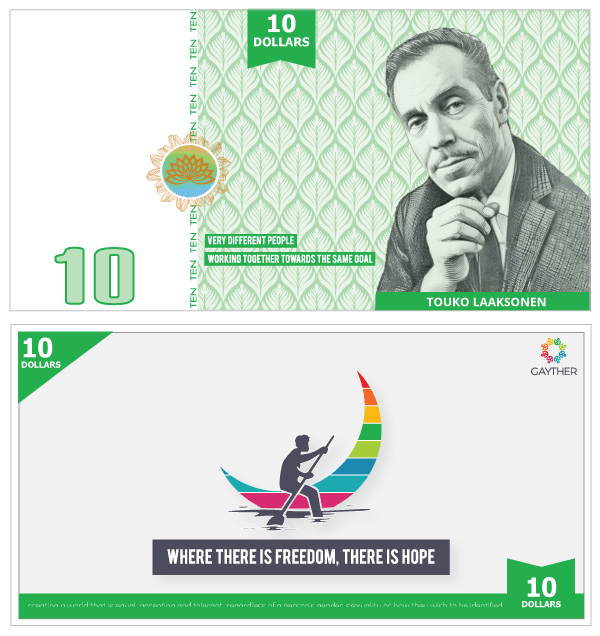
Kaarina, Finland
b. 1920 – d. 1991
Touko Laaksonen, better known by his pseudonym Tom of Finland, was a Finnish artist known for his erotic artwork of men. In a career spanning over 40 years, his drawings often depicted masculine figures in leather, denim, or military uniforms, emphasising their physique and erotic potential.
Tom of Finland was particularly influential in gay culture during the mid-20th century and is considered the most recognisable and influential creator of gay erotic images. His artistic style often featured stylised, exaggerated facial features and muscular body types of his subjects, which became a hallmark of his art. He became well-known in gay communities for his provocative yet charming works of art.
Touko Valio Laaksonen was born in 1920 in Kaarina, a town in Finland. Touko’s parents, Suoma and Edwin Laaksonen, were the town’s grammar school teachers. Little is known about Touko’s early life; however, what is known is that his family lived in living quarters attached to the school, and Touko himself went to school in the city of Turku.
At age 19, he moved to the country’s capital, Helsinki, to begin studying Marketing and began drawing erotic images as a hobby that were intended for his personal use. In 1940, he was conscripted into the Finnish Army when the country went to war, known as the Winter War, with the Soviet Union, and at the same time, Finland formally became involved in World War II. Touko served as a second lieutenant as an anti-aircraft officer, and it was during his service that he developed a fetish interest in uniformed men.
When the war ended, Touko returned to his studies. In 1956, he submitted drawings to the American magazine Physique Pictorial, igniting his long career. Touko used the pseudonym, Tom, as the name was similar to his own, and his images went on to be featured in the Spring 1957 issue. The editor, Bob Mizer, later coined Tom of Finland, by whom he would subsequently be known. Touko’s early work is softer and more focused on the male physique and form.
Following the war, the world saw the rise of subcultures, such as bikers, which impacted Touko and his work. Through the magazine, Touko began drawing masculine, more exaggerated characters of bikers and men in leather, which was also heavily influenced by the US censorship codes, which prohibited overt homosexual depictions.
As his target audience was gay men, any gay pornography was considered illegal; however, muscular young men in athletic poses demonstrating a particular exercise would avoid censorship. In private, Touko would take commissions for more explicit illustrations and started a mail-order business selling reproductions of his artwork worldwide by post.
In the period in which Touko’s illustrations were featured in the American Physique Pictorial magazine, the United States, like many countries, still criminalised same-sex relationships. It was only in 2003 that the United States decriminalised same-sex relationships. For many gay men growing up after the Second World War, they were forced to conceal and hide their sexuality for fear of persecution and criminal prosecution.
Touko’s illustrations for some gay men were lifelines. These illustrations represented their fantasies and helped them during a different period of LGBTQIA+ history. Touko identified as Gay and was with his partner, dancer Veli “Nipa” Mäkinen, for 28 years.
In 1962, a landmark ruling by the United States Supreme Court, which ruled that nude male photographs were not inherently obscene, saw the softcore gay pornography industry born and enabled Touko to begin drawing more homoerotic and explicit drawings. It was in the 1970s that gay pornography became more mainstream, and the interest and popularity of Touko’s work began to increase, enabling him to quit advertising and pursue his artwork full-time in 1973.
In 1970, Touko and his friend Durk Dehner founded the Tom of Finland Company to copyright Touko’s artwork and reduce piracy and misuse of his drawings. Before his death, Touko created over 3,500 illustrations spanning a 40-year career. Sadly, Touko passed away in 1991, at age 71, of an emphysema-induced stroke linked to the disease emphysema that he was diagnosed with only three years before.
The Tom of Finland illustrations, though typically homoerotic, represent a generation and period of LGBTQIA+ history. At that time, people had to hide who they were for fear of isolation and repercussions, legally and personally. Touko’s artwork offered a lifeline for many gay men during that period. A collection of images that help with their fantasies and, in some ways, feel connected to their community.
Touko’s work was groundbreaking, and creating and distributing his artwork, especially early in his career, presented a significant risk to Touko. Though some of the illustrations may not suit all tastes, there is no denying that they form part of 20th-century gay culture. Touko, you were a talented artist, and your artwork will live on. May you never be forgotten.
DISCOVER HOW WELL THE COMMUNITY ARE TREATED..
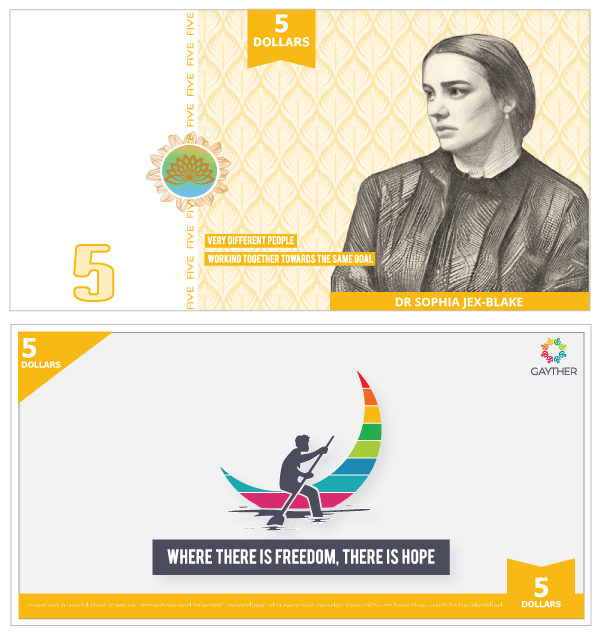
Hastings, Sussex, United Kingdom
b. 1840 – d. 1912
Dr Sophia Jex-Blake was a pioneering figure in the women’s medical education movement, the first female practising doctor in Scotland and among the first female physicians in the United Kingdom. Born in England, she faced significant challenges in pursuing medical training, as women were largely excluded from formal medical education.
Sophia campaigned vigorously for women’s access to medical schools, ultimately gaining admission to the Edinburgh School of Medicine. She founded two medical schools for women in London and Edinburgh and continued to educate and practice until she retired.
Sophia Louisa Jex-Blake was born in 1840 in Hastings, Sussex, England, United Kingdom. Her father, Thomas Jex-Blake, was a lawyer and proctor of the Doctors’ Commons, a self-governing teaching body of canon and civil law practitioners and her mother, Mary Jex-Blake. From a young age, Sophia was educated at home and, at age 8, began attending private schools until she enrolled at Queen’s College, London.
While studying, the college offered her the position of tutor in mathematics, which she went on to perform for three years. At the end of the American Civil War, Sophia travelled to the United States. During her trip, she met one of the first female physicians in the United States, Dr Lucy Ellen Sewall. The two became friends, and their conversations ignited Sophia’s personal aspirations.
Along with Susan Dimock, Sophia applied to Harvard University to join the medical programme; however, they received a letter of rejection stating that the university had no provisions for female students. Her plans changed when her father died, and she had to return to England.
When Sophia returned home, her aspirations had not changed, and given that Scotland at that time was more liberal concerning women’s rights, Sophia decided to apply to the University of Edinburgh to study medicine. The university responded that it could not make the necessary provisions for one female student. The response gave Sophoa hope, and she began a campaign to find other women who wanted to study medicine.
Sophia took out adverts in several newspapers, including Scotland’s The Scotsman, calling for more women to come forward to wish to study medicine. In 1869, Sophia, along with six women, made an application to the Univerity of Edinburgh, which this time was successful, making the university the first British university to admit women. As they became known, the Edinburgh Seven faced hostility and discrimination from the other male students.
Frustrations towards the women culminated in the Surgeons’ Hall riot when a mob of over 200 people began throwing mud, rubbish and insults at the women. The riot caught national attention; however, though generally positive, the medical faculty was frustrated with the attention and started a campaign to refuse women the ability to graduate and for the university to appeal the decision of the high court. When appealed, the courts ruled that the women should never have been admitted, and their degrees were revoked. Many of the Edinburgh Seven went to other European universities to graduate.
In 1874, Sophia helped establish the London School of Medicine for Women while campaigning for women’s rights to receive an education. In 1876, the UK government passed the Medical Act, which repealed all previous laws and finally allowed medical authorities to license qualified applicants regardless of gender.
In 1877, the University of Berne awarded her a medical doctorate and four months after graduating, she became certified by the King and Queen’s College of Physicians of Ireland in Dublin, which meant she could finally register with the General Medical Council, making her the third women to be registered as a doctor in the UK.
After graduation, Sophia started a practice in Edinburgh for poor women and established the Edinburgh School of Medicine for Women. Sophia ran her practice and taught for a further 16 years up until her retirement. Though never publicly confirmed, it is believed that Sophia and her assumed same-sex partner, Dr Margaret Todd, moved to Southern England when they retired. Thirteen years after her retirement, at age 71, Sophie died and was buried at St Denys Rotherfield.
Sophie’s legacy lies in her role as a trailblazer for women in medicine and her commitment to advancing women’s rights in higher education. Dr. Sophia Jex-Blake remains an influential figure in the history of women’s medical education and the broader fight for gender equality. Dr Sophia Jex-Blaker, may you never be forgotten.
LGBTQIA+ COUNTRY & REGION GUIDES

Over the centuries, the treatment of the community and its members’ rights has changed, from individuals being tolerated and often on the fringe of society to becoming active targets and facing brutal persecution. It was only until the end of the 18th Century that things improved. Large scale global change only began to occur in the 20th Century, typically from the 1970s to the present day.
The New York Stonewall Riots in 1969 became a catalyst for the global gay liberation movement. However, many brave individuals have stood up and championed the community throughout history, often at significant risk to themselves. It is often hard to imagine what life must have been like even as recent as 40 years ago, left alone 200 years. With conservative and religious beliefs dominating society, many individuals were required to suppress and hide their true selves for fear of persecution.
It took a group of brave and fearless individuals to stand up and have their voices heard. To show the world that the rules, laws and opinions had to change. The change resulted in the freedoms and rights many of us now enjoy. Increase acceptance and protection within the law directly given the work and effort of these exceptional individuals. Though there have been significant developments relating to the equality status for many members of the LGBTQIA+ community, they are not so fortunate. Many people still live in countries and under regimes; even today, they are actively targeted and in constant fear for their lives. In those countries right now, activists are fighting to change the rights and laws. As individuals and all the risks, and for their bravery and desire to see change, we are truly grateful for all they are going for the global community. We know many of those activists will become pioneers in the future.
Gayther feels it is crucial to highlight and focus on these exceptional pioneers as a community and their contributions to fairer and more tolerant societies worldwide. To showcase all that they have accomplished and to ensure that they are never forgotten, so we would like to take this opportunity to introduce you to Gayther’s annual pioneer collection.
Other collections: ADVOCATES | PIONEER COLLECTIONS: 2026 | 2025 | 2024 | 2023 | 2022 | 2021 | 2020 | 2019
There are thousands of events taking place, it is not always easy to know what is going on and when, Gayther can help




